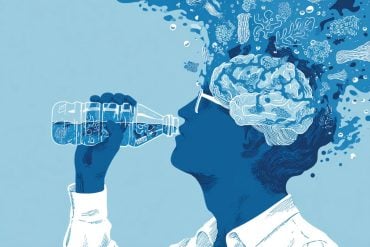If you’ve ever felt lackadaisical to start a new project, focus on imagining the joy of completing it, say University of Michigan researchers.
Both are a function of dopamine, which explains the motivation to start and the satisfaction of finishing work, they say.
In a new study, U-M researchers Arif Hamid and Joshua Berke, professor of psychology and biomedical engineering, argue that dopamine levels continuously signal how good or valuable the current situation is regarding obtaining a reward. This message helps people decide how vigorously to work toward a goal, while also allowing themselves to learn from mistakes.
“We provide a new theoretical account for how dopamine affects learning (what to do later) and motivation (getting fired up to go now) simultaneously,” said study lead author Hamid, U-M neuroscience doctoral student.
For many years, researchers have known that dopamine is important for arousal, movement, mood and executing activities with haste and vigor. Aspects of these normal dopamine functions are highlighted in disorders, such as Parkinson’s disease and depression. Drugs that elevate brain dopamine levels, like cocaine or amphetamines, produce euphoric feelings of well-being, in addition to heightened arousal and attention.
Aside from affecting immediate mood and behavior, dopamine also produces changes in the brain that are persistent, sometimes lasting a lifetime.
“This is basically how we stamp in memories of what the smell of cookies or the McDonald’s sign mean: predictors of delicious, calorie rich rewards,” Hamid said.
Abrupt dopamine increases when a person perceives stimuli that predict rewards is a dominant mechanism of reward learning within the brain—a concept similar to Russian physiologist Ivan Pavlov’s dog hearing the bell and salivating at a response to stimuli, he said.

Hamid said the precise mechanism of how a neurotransmitter can achieve both invigorating and learning functions is counterintuitive, and many decades of neuropsychological research has attempted to resolve exactly how.
One theory, spearheaded by U-M psychologists Kent Berridge and Terry Robinson, suggests that dopamine invigorates actions toward desired goals. For example, rats with almost no brain dopamine will not retrieve food a few inches away while they’re starving.
Another theory suggests dopamine is a “teaching signal,” like a coach who tells his player “good job” or “bad job” to encourage a future reward. In the current study, U-M researchers describe those dopamine fluctuations as a continuous cheer to motivate, with brief moments of criticism.
They measured dopamine levels in rats while they performed a decision-making task, and compared it with how motivated the rats were and how much they learned. They also increased dopamine levels to artificially motivate the rats and repeatedly made them learn to perform actions that did not produce rewards.
The study’s other authors include Jeffrey Pettibone, Omar Mabrouk, Vaughn Hetrick, Robert Schmidt, Caitlin Vander Weele, Robert Kennedy and Brandon Aragona.
Funding:Source: Jared Wadley – University of Michigan
Image Source: The image is adapted from the University of Michigan press release
Original Research: Abstract for “Mesolimbic dopamine signals the value of work” by Arif A Hamid, Jeffrey R Pettibone, Omar S Mabrouk, Vaughn L Hetrick, Robert Schmidt, Caitlin M Vander Weele, Robert T Kennedy, Brandon J Aragona and Joshua D Berke in Nature Neuroscience. Published online November 23 2015 doi:10.1038/nn.4173
Abstract
Mesolimbic dopamine signals the value of work
Dopamine cell firing can encode errors in reward prediction, providing a learning signal to guide future behavior. Yet dopamine is also a key modulator of motivation, invigorating current behavior. Existing theories propose that fast (phasic) dopamine fluctuations support learning, whereas much slower (tonic) dopamine changes are involved in motivation. We examined dopamine release in the nucleus accumbens across multiple time scales, using complementary microdialysis and voltammetric methods during adaptive decision-making. We found that minute-by-minute dopamine levels covaried with reward rate and motivational vigor. Second-by-second dopamine release encoded an estimate of temporally discounted future reward (a value function). Changing dopamine immediately altered willingness to work and reinforced preceding action choices by encoding temporal-difference reward prediction errors. Our results indicate that dopamine conveys a single, rapidly evolving decision variable, the available reward for investment of effort, which is employed for both learning and motivational functions.
“Mesolimbic dopamine signals the value of work” by Arif A Hamid, Jeffrey R Pettibone, Omar S Mabrouk, Vaughn L Hetrick, Robert Schmidt, Caitlin M Vander Weele, Robert T Kennedy, Brandon J Aragona and Joshua D Berke in Nature Neuroscience. Published online November 23 2015 doi:10.1038/nn.4173







